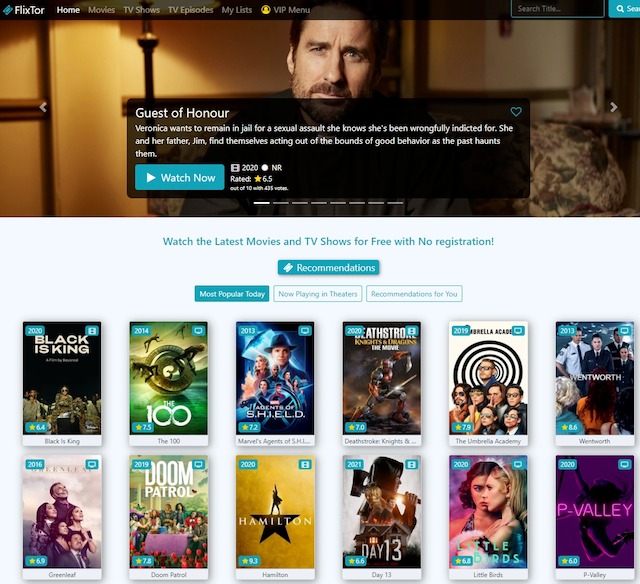Canadian viewers are embracing a new era of television. Instead of relying on legacy cable or satellite, households are turning to Internet Protocol Television, or IPTV, to enjoy live channels, movies, and series over a broadband connection. This shift to digital TV is reshaping how we watch, what we pay, and the features we expect from a modern TV service.
What Is IPTV and Why It Matters
IPTV delivers TV content through the internet rather than through coaxial or satellite signals. That may sound technical, but the impact is simple: more choice, better control, and smarter features. With IPTV, your subscription can blend live channels, time-shifted programming, and video on demand into a single interface. You can pause, rewind, or catch up on missed shows without waiting for a replay. For families with varied tastes, IPTV’s flexibility beats rigid channel blocks.
The Canadian Context: Choice, Language, and Content
Canada’s TV landscape is unique. Viewers often want English and French channels, plus regional news, sports, and multicultural packages. IPTV shines here because it can scale channel lineups dynamically and offer niche and international content that’s hard to find on traditional bundles. Sports fans can focus on premium sports feeds while movie buffs dive into extensive on-demand catalogs.
When comparing services for iptv canada, look for providers with clear channel lists, reliable infrastructure, and simple apps for the devices you already own. The best setups feel invisible: channels load fast, streams stay stable, and the interface makes it easy to browse, search, and resume.
Benefits of Switching to Digital TV via IPTV
Moving from cable to IPTV is about more than saving money. It’s about control, quality, and convenience. Consider these advantages:
- Flexible bundles: Choose lean packages or specialized add-ons instead of paying for dozens of channels you never watch.
- On-demand libraries: Access movies and series instantly, often with curated collections and recommendations.
- Time-shift features: Catch-up TV and network DVR let you watch on your schedule.
- Multi-screen support: Watch on your TV, phone, tablet, or laptop with seamless handoff.
- 4K and HDR potential: High-quality streams are common on capable networks and devices.
- Streamlined hardware: No set-top contracts or truck rolls—download an app and sign in.
- International options: Access multicultural channels for bilingual or multilingual households.
What to Evaluate in an IPTV Subscription
Not all services are created equal. A smart selection puts reliability and transparency first:
- Channel lineup: Confirm the exact networks you need, including regional feeds and language options.
- Quality tiers: Ensure stable HD; verify whether 4K is available and on which channels.
- Trial or demo: A short test helps you gauge buffering, picture quality, and app usability.
- App ecosystem: Look for native apps on Android TV/Google TV, Apple TV, Fire TV, and Smart TVs; check if simultaneous streams are allowed.
- VOD depth: Browse the on-demand library—quantity matters, but so does curation and metadata quality.
- EPG and search: A rich electronic program guide and universal search make navigation effortless.
- Support and uptime: Seek responsive support, clear status updates, and proven uptime.
- Transparent policies: Know how many devices are included, data usage expectations, and cancellation terms.
Setting Up for Success: Devices and Network Tips
IPTV performance hinges on your home network configuration. Even the best service struggles on congested Wi‑Fi. A few tweaks go a long way:
- Prioritize connection type: Use Ethernet for your main TV device if possible. If not, a 5 GHz Wi‑Fi connection beats 2.4 GHz for streaming stability.
- Bandwidth planning: Aim for at least 25 Mbps per 4K stream or 10 Mbps per HD stream to avoid contention during busy evenings.
- Router setup: Enable QoS or traffic prioritization for your streaming device. Keep firmware up to date.
- Avoid network clutter: Limit simultaneous heavy downloads or cloud backups while watching live sports.
- Device choice: Modern streamers (Apple TV, Chromecast with Google TV, Fire TV Stick 4K, NVIDIA Shield) deliver better decoding and smoother EPG navigation.
Who Benefits Most from IPTV
Sports devotees love low-latency streams and instant replays. Families appreciate profiles, parental controls, and broad kids’ content. Multilingual homes value easy access to international channels without juggling multiple providers. And frequent movers enjoy the portability—your TV service travels with your login, not your postal code.
Cost Considerations and Value
Pricing varies by channel count, quality tiers, and number of simultaneous streams. The sweet spot for many households is a lean base package with optional add-ons for sports or premium movies. Look for clear monthly pricing and avoid long-term lock-ins. The real value emerges when you combine a flexible plan with your viewing habits: why pay for dozens of channels you’ll never open?
FAQ
Is IPTV legal in Canada?
IPTV is a delivery method. Legality depends on content rights and licensing. Choose services that offer properly licensed channels and content libraries.
How much data does streaming use?
Approximate usage: 3 GB/hour for HD and 7–10 GB/hour for 4K, depending on codec and bitrate. If you have a data cap, track usage and adjust quality settings.
What internet speed do I need?
Plan for at least 10 Mbps per HD stream and 25 Mbps per 4K stream. If multiple people stream concurrently, scale up accordingly.
Can I use my own devices?
Yes. Most IPTV services support popular streaming devices and smart TVs. Check compatibility before subscribing, and ensure the app is actively maintained.
The Bottom Line
Switching to IPTV in Canada delivers flexible packages, modern features, and superior convenience. With the right provider and a solid home network, you’ll enjoy crisp streams, robust on-demand libraries, and control over when and how you watch. If you’ve been waiting for a compelling reason to cut the cord, this is it: digital TV has finally caught up with how Canadians live—and watch—today.




